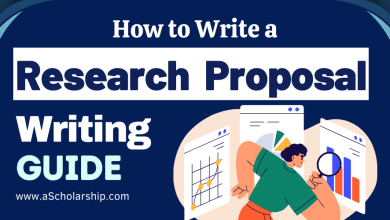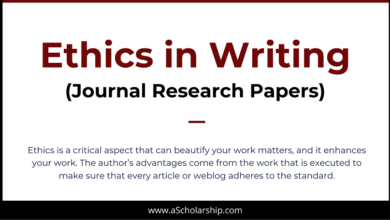Difference between Scientific and Creative Writing Styles

While students kickstart with their research work, they encounter this question to figure out which of the writing style to chose between Scientific writing or creative writing. Many students don’t know the difference between the two types of academic writing styles that leads them to unwanted complications.
What is Scientific Writing?
Scientific writing is rather also known as science writing in which we only disclose scientifically proven facts and figures and it is quite formal and official. It’s writing about science that, however, includes certain elements of creativity to communicate science to other people.
What is Creative Writing?
Creative writing is semi-formal and is expected to entertain readers with proper word choices and arouse certain feelings about what they read. It has more room to breathe and allows for applying non-scientific approaches. The best thing about creative writing is; it involves the reader’s interest and makes the whole reading process quite much interactive.
Lauren Bradshaw, a proficient essay writing expert at Customwritings, expresses an important opinion concerning these types of writing. “Scientific writing and creative writing have clear differences that, however, don’t strongly interfere with one another. The cleverest students can combine certain characteristics of both styles to enjoy better results.” This informative guide will shed more light on the peculiarities of both types of writing and will show how to develop them effectively.
Scientific Writing Prompts
We’d like to begin with scientific writing because this form of academic writing is more complicated. Many students experience great difficulties with writing scientifically-based projects. They blame strict demands that limit their creativity. However, it’s not that bad as they assume. Our smart recommendations may change their mind.
#1 Simplify Word Choice
Many people mistakenly think that every scientifically-based assignment must be overloaded with “clever academic” words. They think it must be highly sophisticated. This assumption is totally wrong. As we’ve mentioned at the beginning, scientists always try to connect their research to other people. Not all people have a scientific background and so scientists use common words to explain their studies. You should overuse technical terms and professional jargon. It makes your text unreadable. Instead of doing that, simplify the words and replace technical terms when it’s possible. Thus, you’ll enhance readability and your readers will comprehend your theses. Of course, you cannot avoid all technical terms. When you have to implement them, make sure you instantly explain their meaning and provide some simple examples. It’s likewise important to expand your active vocabulary. Thus, you’ll learn plenty of adequate substitutes for complex terms.
#2 Write Concisely
Another great prompt to follow is to minimize the length of your sentences and paragraphs. It’s hard to read long sentences that seem to have no end. Simply remember what kinds of books you read faster. We can bet that books with overly long sentences and paragraphs aren’t your favorite ones. Moreover, sentences stuffed with heaps of scientific data become more complicated for comprehension. Therefore, cut all long sentences into smaller chunks. Your paragraphs should be likewise structured in a comprehensive way. Thus, you’ll sufficiently enhance readability.
#3 Understand When to Apply Active and Passive Voices
Many academic writers recommend preferring the active voice. It’s more natural, dynamic, and uses fewer words compared to the passive voice. It likewise enhances the readability of your texts. Nevertheless, scientifically-based assignments frequently require passive constructions. It doesn’t mean you should reject active constructions entirely. You’re supposed to find the middle ground.
For example, the introductory section always provides general information. Therefore, the active voice will be more suitable. When you go on, you should introduce methodologies, experiments, data, research results, and something of the kind. This information should be implemented via passive constructions.
#4 Enhance Readability
It’s of huge importance to make your scientific paper understandable for common readers. We have already recommended writing short sentences and simplifying your word choice. However, it’s not enough to make a scientific text pleasant to the eye. There are other approaches to reach that effect.
Make sure you avoid regular repetition. Control the flow and don’t repeat the same words and phrases too frequently and too close to each other. Remain consistent in everything you write. If you have chosen a concrete definition of a particular phenomenon, make sure you don’t drastically change or substitute it with another word. It may confuse your readers.
#5 Including Abbreviations
You can use abbreviations and acronyms to help your readers. It’s not necessary to repeat long complex words and phrases all time long. You can choose the official abbreviations for them or propose your own. You should likewise use smooth transitions between all writing sections and minimize the occurrence of pronouns.
Creative Writing Prompts
When it comes to creative writing, most students claim they like it. However, many youngsters lack creative ideas to write original and captivating projects. Therefore, we have prepared several prompts to boost your creativity.
#1 Practice Free Writing
One of the best techniques that improve creativity is free writing. Its purpose is very easy to follow. You should set a timer and write until the time expires. You’re free to choose the deadline and topic. This technique allows for boosting your creative skills because you constantly write on different topics. Practice it every day for about 10-15 minutes and you’ll quickly enhance your creative writing.
#2 Workshop It
The wisest writers always collaborate with their colleagues. You can throw friendly and professional workshops online. Choose the theme and collaborate with other writers (students) to interchange experience. You’re not forced to use all the prompts and recommendations of your colleagues. Nevertheless, you’ll definitely enrich your knowledge and experience from this and similar forms of collaboration.
#3 Write One-Sentence Stories
One of the most uncommon creativity boosting techniques is to write very short stories. They are really short because they must consist of only one sentence. The main objective of this technique is to teach a writer to plainly express the main idea of his/her paper using a single sentence. In other words, you should form convincing thesis statements. Generate about 10-15 sentences every day and you’ll quickly learn how to craft the best thesis statements that clearly deliver your main message.
#4 Brainstorm Brilliant Ideas
The method of brainstorming is widely used by writers and students. It allows for generating relevant ideas for what they are going to write. However, the types are different. Some people use an image related to the chosen topic. Looking at it, they write down their associations. Another type is to write a single word, which fully reflects your topic. It may be “education”, which becomes the “tree”. Afterward, record all the thoughts related to the tree. Every new word will become a “leaf” that completes the tree. You may write methods of education, techniques, skills, textbooks, problems, solutions, etc.
#5 Rewrite Articles and Stories
Another effective approach is to rewrite the articles or stories of other authors. It’s a good practice for people who lack experience. If you don’t have any associations with a certain theme, find articles written in newspapers or scientific journals. Read them and try to rewrite them in your words. This technique enlarges your knowledge, expands your active vocabulary, and makes you more experienced and creative.
Summing Up
Both writing styles have clear objectives, which show students how to complete their academic projects correctly. Memorize the difference between scientific and creative styles of writing. Thus, you won’t be mistaken and won’t write a mess. Obligatorily implement our prompts to improve both styles. They likewise help to understand how to combine several elements to make your scientific papers more creative, as well as to make creative papers more scientific when it’s needed.



